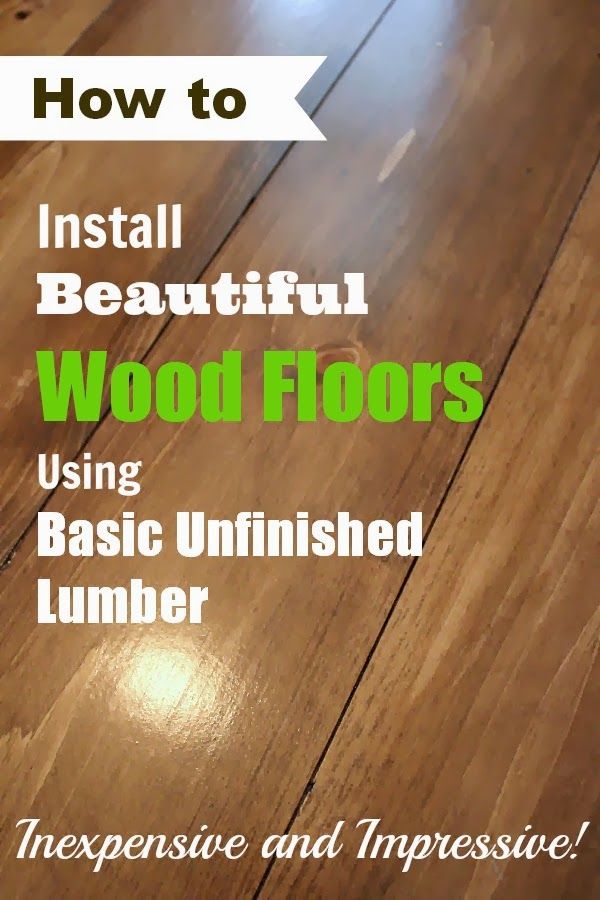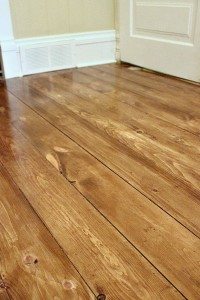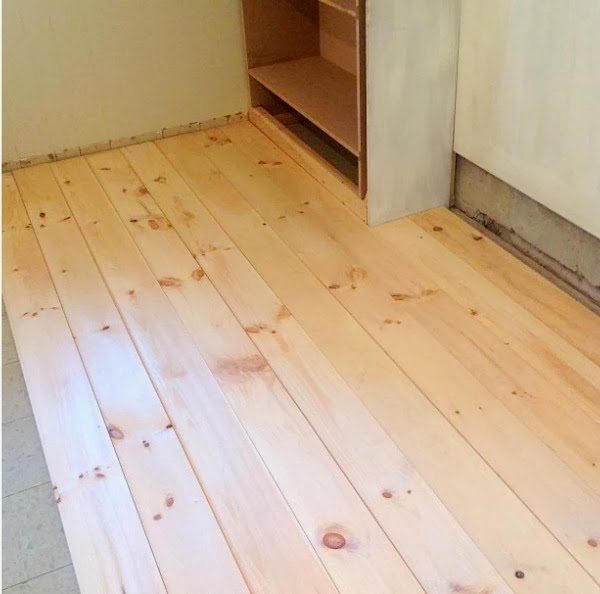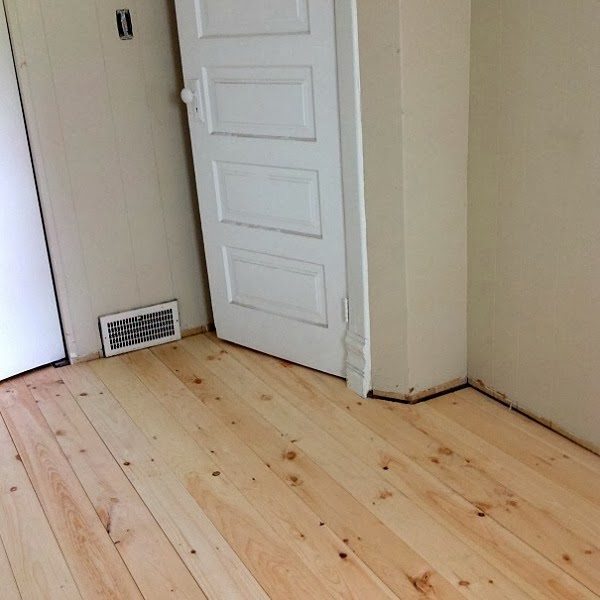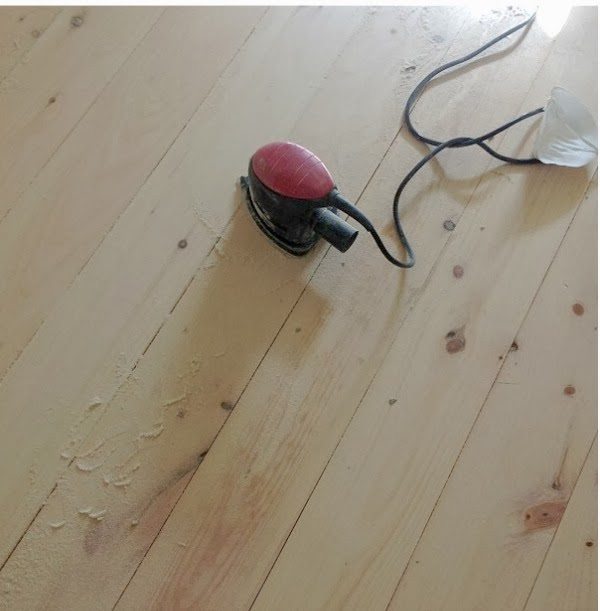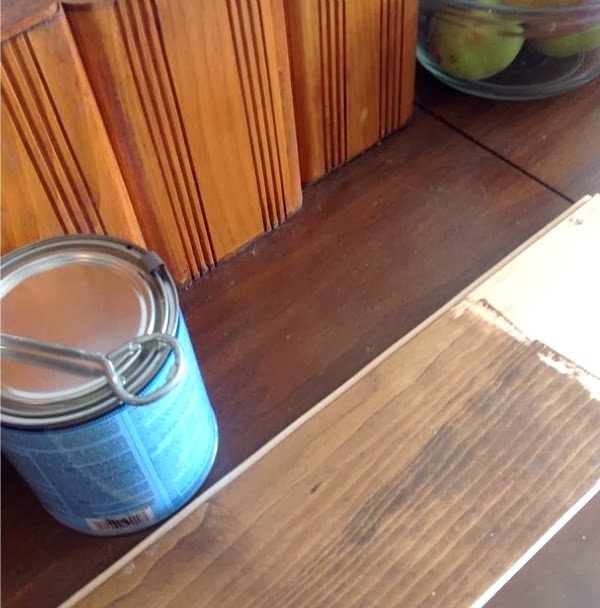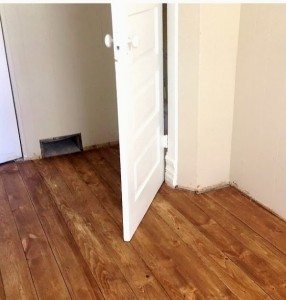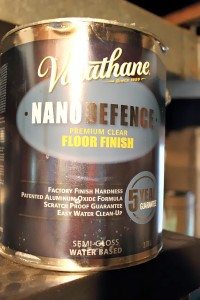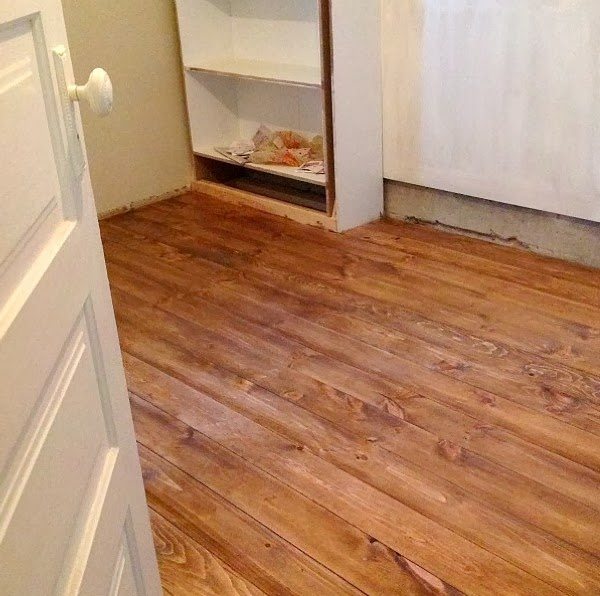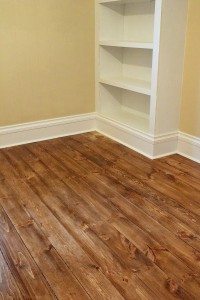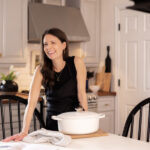
So you want to DIY yourself some pretty wood floors do ya? We just completed this project in our new nursery and I absolutely love it. Head over heels. I have to say though, easy-peasy it was not. Well, for me it was because there wasn’t much I could help with, but for Chris it was a fairly back-breaking process. That being said, they’re beautiful and totally worth it. We’ll definitely be doing this type of flooring again in other rooms of the house. (Don’t worry – Chris agrees! I’m not that much of a slave driver.)
Because Chris spent most of the time that he was working on this project cursing this old house of ours, I wasn’t really able to get in and get pictures of him working on it, but I did manage to sneak in and instagram the step-by-step progress. So I’ll share those with you today and explain how it was done, which was a little different than what I expected.
Related: Using peel and stick tile!
(Please excuse the quality of these next few photos! These were all just taken with my phone on the fly!)
The wood we chose was basic tongue and groove (tongue in groove?) pine boards that you can find in the lumber section of your hardware store. These are about 3/8″x 6″. Because they didn’t have enough in stock, we had to special order them. We ended up ordering them in 12 foot lengths and that made life a lot easier since the room is almost exactly 12 feet wide. We cut the boards and dry fitted them in the room to make sure we had the right number of boards.
You could use any type of lumber you like for this project, but I really liked the idea of wider plank pine boards that would look a little more like they’re original to the house and might even get a little more dinged up with use. I didn’t want that super-shiny brand new floor look, because that just wouldn’t make sense for our old farmhouse.
Next it was time to attach the boards to the floor. The way we did it was actually a little more like laying big tiles than laying other types of wood flooring that we’ve done before. We bought a big tub of wood floor adhesive, which I didn’t even know existed, and that did most of the holding down of the wood for us. Chris said it was pretty much the worst stuff in the world to work with, like the thinset that you use when laying tile, but way harder to spread. So he’d spread a layer down big enough for one board with a trowel and then splat the board on top and secure it with a few nails shot in with the nail gun. And repeat. I’m sure it gets easier with practice, but he definitely looked like he’d been through a war when he was done. The floors, on the other hand, looked amazing!
Of course, it’s Chris, so he thought they looked terrible and spent the next several days sanding them until they were ridiculously smooth.
Then it was time to stain! The stain we used was from Varathane and it was actually a stain and polyurethane in one, in a color called Early American.
This particular product is meant more for furniture than floors, but I wanted something that wasn’t super strong and glossy and might even wear out a bit in areas. Well, Chris got on a perfectionist streak and wasn’t haven’t any of it, so we did end up using a floor finish on top, which I’ll tell you about in a moment.
The color, however, was so perfect that we used it anyway. This was our test piece. I was super impressed by this stain/poly combo, by the way. I’m not even being paid to say that. I’ve tried other similar products and the color always seems to be really washed out and doesn’t saturate very well, but this color went on so evenly and really was exactly what I was looking for.
So Chris stained the floors next!
We didn’t use any pre-stain wood conditioner or anything and it was perfect!
By this point, Varathane had totally gained my trust, so this is the floor finish we used. Although I didn’t really originally want any extra finish on top, I’m glad we went with it. We only needed about 3 coats too, which is much less than we anticipated, so I think having that bit of poly in the stain we used really helped save us some time and some coats.
So now we have floors!
I think they bring so much warmth and character into the room and I can’t wait to see these same floors all over the house.
Don’t worry, next time we do this, the baby will be born and I can actually help poor Chris!
If you’re feeling brave and adventurous, I’d definitely recommend trying your hand at laying down some plain lumber wood floors. I promise you’ll love the results and the money you’ll save doesn’t hurt either!
Courtenay Hartford is the author of creeklinehouse.com, a blog based on her adventures renovating a 120-year-old farmhouse in rural Ontario, Canada. On her blog, Courtenay shares interior design tips based on her own farmhouse and her work as founder and stylist of the interior photography firm Art & Spaces. She also writes about her farmhouse garden, plant-based recipes, family travel, and homekeeping best practices. Courtenay is the author of the book The Cleaning Ninja and has been featured in numerous magazines including Country Sampler Farmhouse Style, Better Homes and Gardens, Parents Magazine, Real Simple, and Our Homes.
